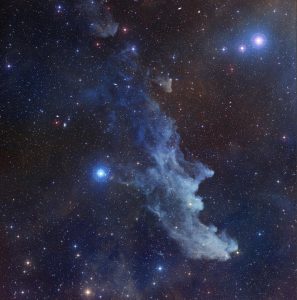Multiple stars are two or more stars that are bound together by gravity. A binary system is simply one in which two stars orbit around a common centre of mass, the barycentre. Binary stars are of immense importance to astronomers. Optically they may appear together even though they may be light years apart. But as the distances are so vast astronomers treat them as close companions. In this way they can learn a great deal about their mass, and in turn their size, density, temperature and absolute luminosities.
Many stars forming within a star cluster find a companion before setting out into the galaxy as a binary. Indeed, some astronomers suggest that as many as 85% of all stars in the universe are in binary systems, with some in triple or even higher-multiple systems. If true then the sun is a rare loner. Even the most conservative astronomers concede that, at the very least, 50% of all stars in the universe must be members of multiple systems.

Even so, they cannot agree on the reason. It may be that in the chaos of star clusters, under gravitational forces materials accrete in such a way that two or more bodies emerge. Another idea is that stars could form a partnership through the collapse of discs of material around a single star. In this scenario a young star is surrounded by a rotating disk of gas and dust, which has not been drawn into that star. Instead, rapid rotation throws the remaining fragments into a new close gravitational centre and a second star forms and becomes surrounded by its own disk. The two stars then emerge from the cluster as an orbiting pair.
The orbital periods and distances of binaries vary enormously. Some systems are so close that the surfaces of each star are practically touching each other and exchange material. Others may be separated by millions, even billions of kilometres or more. Depending on proximity orbital periods can range from a few hours to millions of years.
If the two stars are of similar mass they orbit a common centre of gravity. On the other hand if one of the partners is much bigger the centre of gravity could well be inside that star. The other star is in orbit around it, causing the more massive star to “wobble” in response to the forces at work.
Most of the multiple stars are so far away that optically they appear close together and have only been distinguished because of their spectra. They also vary widely in size and colour. Indeed, stars of any age can be part of a multi-star system.
Rigel is a triple star some 900 light years away. Rigel B and Rigel C orbit each other 4 billion kilometres apart in an almost circular orbit. This suggests they must be of similar mass. In contrast the main star, Rigel A, is 300 billion kilometres away.
Polaris is a double star (and its current position places it as our north star). But as with Rigel, Polaris A and Polaris B are actually 300 billion kilometres apart. Polaris A is also called a Cepheid variable with a period of just four days. Cepheid variables are described later under their own heading.
Alpha Centauri, like many binaries, was for many years assumed to be a single star. It was not until improved optics revealed it as a binary: Alpha Centauri A and Alpha Centauri B in the Constellation Centaurus. They are 3 441 million kilometres apart and orbit each other every 79.9 years. Alpha Centauri A is a Type G star, a yellow dwarf like our Sun. It has a solar mass of 1.1 and is 1.57 times more luminous. Its surface temperature is 5 790°C. It is also known as Rigil Kentaurus.
Alpha Centauri B is a Type K star, a yellow-orange dwarf. It has less mass (0.9 solar mass) and half the luminosity of the sun. Its temperature is 5 260°C. It is also known as Toliman.
While Alpha Centauri is the closest star system to us at 4.37 light years, there is an individual star that is even closer (aside from our Sun!). This is Proxima Centauri that lies at 4.22 light years distant. This star has an orbital period around the binary of around 500 000 years. However, some authorities suggest Proxima Centauri is actually passing through the Centaurus system and may eventually leave in several million years.
Back to Top
By Nigel Benetton, science fiction author of Red Moon Burning and The Wild Sands of Rotar.
Last updated: Tuesday, 2nd March 2021